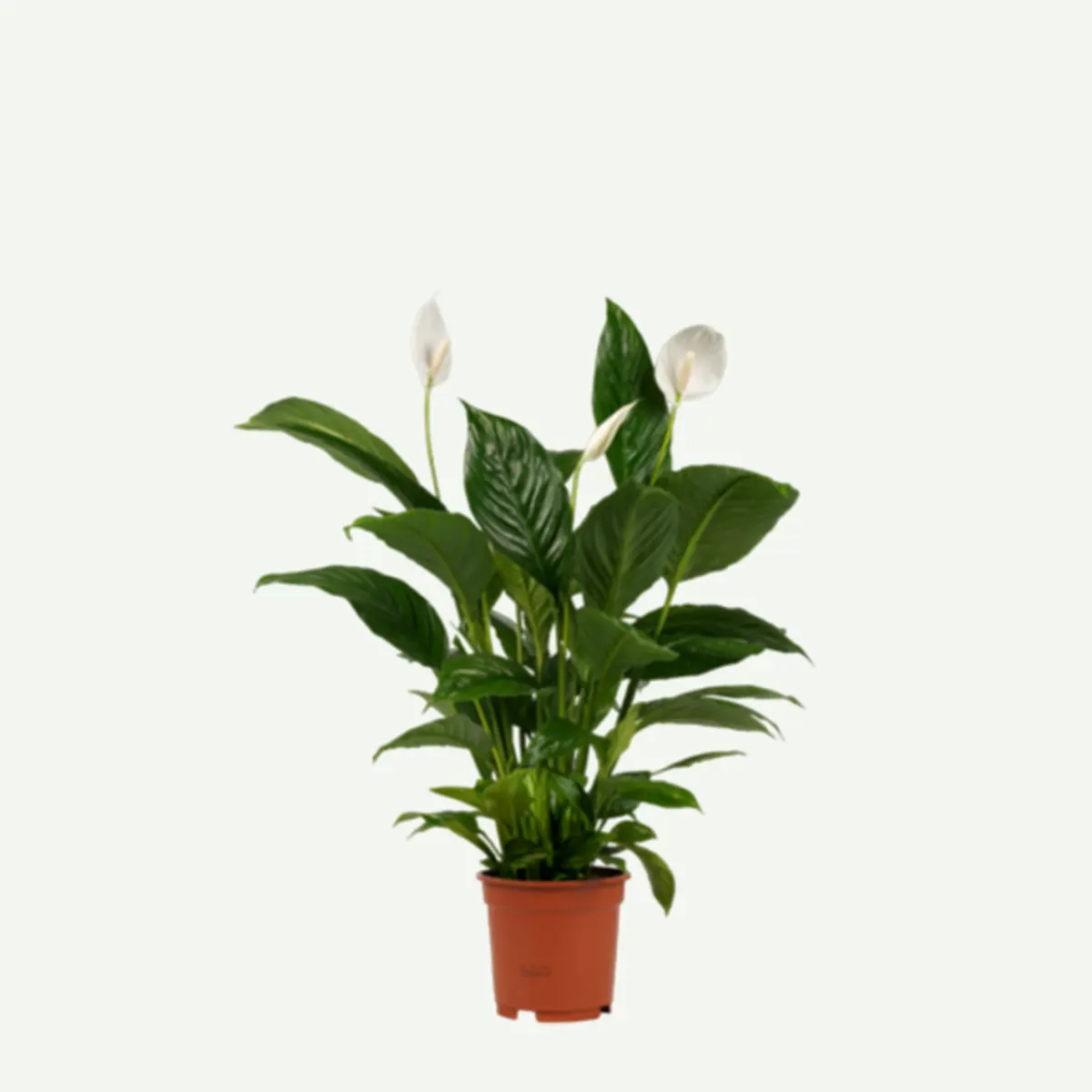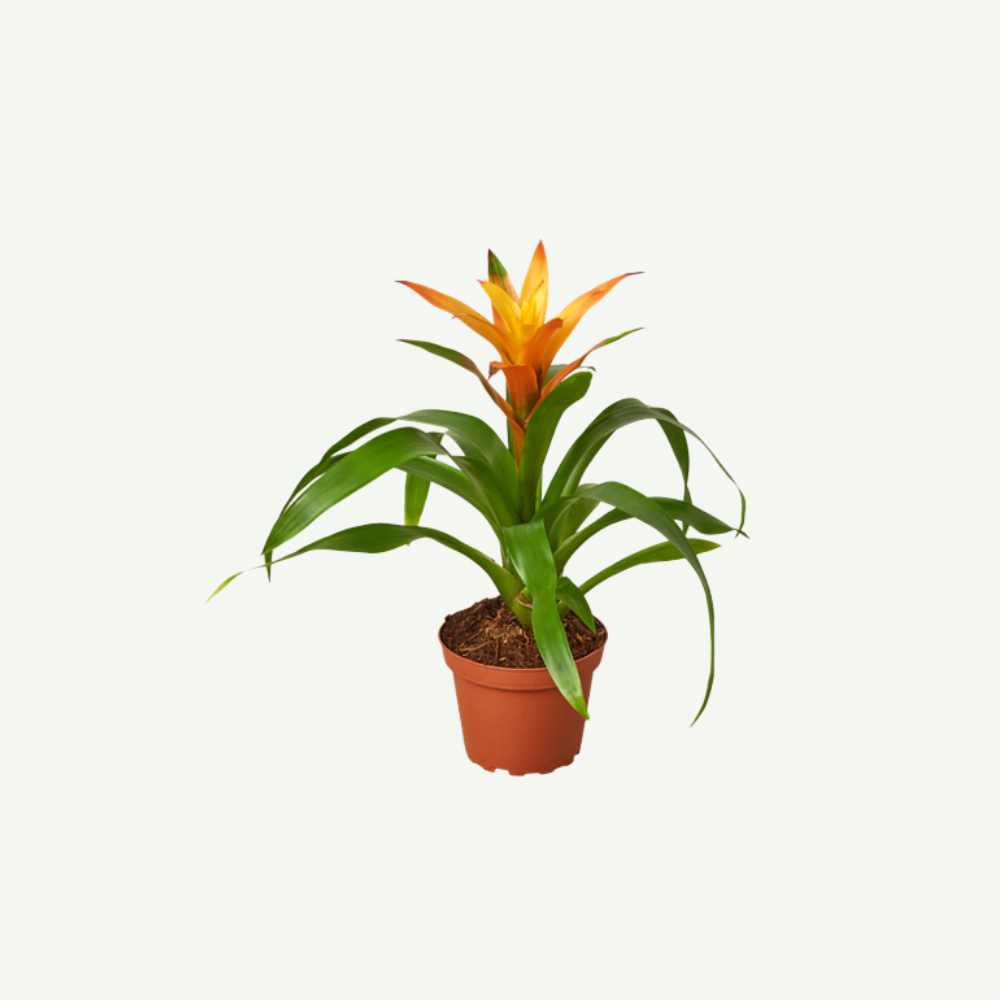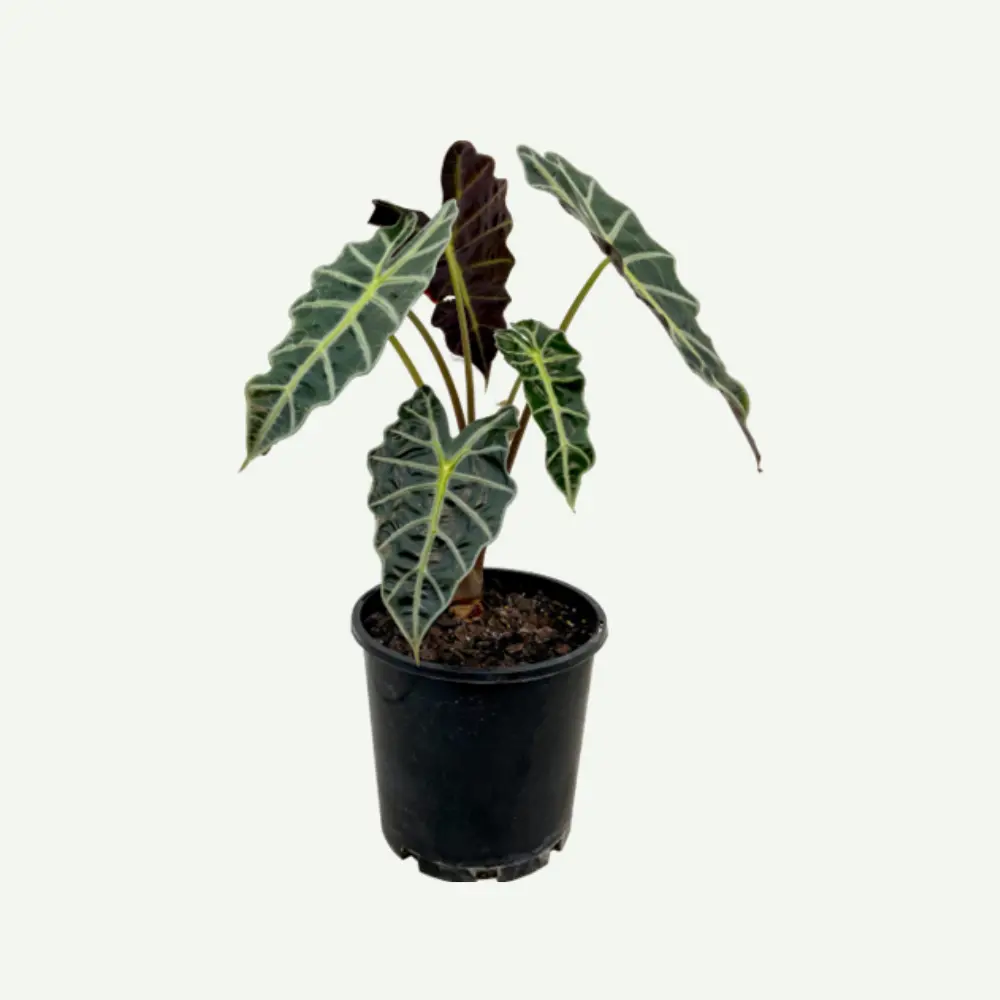Peace Lily, botanically known as Spathiphyllum, is a popular and elegant houseplant belonging to the Araceae family. Native to tropical regions of the Americas and southeastern Asia, Peace Lilies have gained popularity as indoor plants due to their attractive foliage and striking white flowers. They are highly valued for their air-purifying qualities, making them a favorite choice for improving indoor air quality.
Care of Peace Lily:
Light: Peace Lilies prefer bright, indirect light. They can tolerate lower light conditions but will produce fewer flowers. Avoid placing them in direct sunlight, as it may scorch their leaves.
Temperature: These plants thrive in average room temperatures between 65°F to 80°F (18°C to 27°C). They are sensitive to cold temperatures and should be protected from drafts and extreme temperature fluctuations.
Watering: Peace Lilies like to be kept evenly moist but not waterlogged. It’s essential to water them when the top inch of the soil is dry. Overwatering can lead to root rot, while underwatering may cause wilting. They will usually recover quickly after being watered.
Soil: A well-draining and rich potting mix is ideal for Peace Lilies. A mix of peat moss, perlite, and vermiculite or a high-quality indoor plant potting mix will work well.
Humidity: Peace Lilies appreciate higher humidity levels. Regular misting or placing the plant on a humidity tray can help provide the necessary moisture.
Fertilization: Peace Lilies do not require frequent fertilization. A balanced, diluted liquid fertilizer can be applied every 2 to 4 weeks during the growing season (spring and summer).
Characteristics of Peace Lily:
Leaves: Peace Lily plants have glossy, dark green, lance-shaped leaves that grow in an attractive rosette pattern. The leaves can grow quite large, depending on the species and growing conditions.
Flowers: The most distinctive feature of the Peace Lily is its elegant, white, and spoon-shaped flowers, which resemble a white flag or peace symbol, hence the common name “Peace Lily.” The flowers emerge on long stems called spathes, surrounded by a white, hood-like bract.
Size: Peace Lilies can vary in size, with smaller varieties reaching about 1 to 2 feet (30 to 60 cm) in height, while larger ones can grow up to 3 to 4 feet (90 to 120 cm) tall.
Growth Habit: Peace Lilies have a clumping growth habit, forming dense and attractive foliage. As they grow, they may produce offsets or baby plants that can be separated and repotted.
Landscape Use of Peace lily:
Shaded Garden Beds: In regions with a mild or tropical climate, you can plant peace lilies in shaded or partially shaded garden beds. Their attractive foliage and graceful, white flowers can add a touch of elegance to shaded garden areas.
Understory Plant: In gardens with taller trees or shrubs, peace lilies can be used as understory plants. They thrive in the filtered light conditions beneath taller vegetation and add a lush and tropical feel to the lower layers of the garden.
Container Gardens: Plant peace lilies in large pots or decorative containers to place on patios, decks, or in courtyard gardens. Their striking white flowers and glossy leaves make them an eye-catching focal point in outdoor living spaces.
Accent Plant: Use peace lilies as accent plants in garden beds, along walkways, or near water features. Their unique and elegant flowers can draw attention and add a touch of beauty to the landscape.
Indoor/Outdoor Transition Areas: Place peace lilies in covered outdoor spaces like verandas or screened-in porches, where they can thrive in a sheltered environment while providing a bridge between the indoor and outdoor living areas.
Educational Gardens: Peace lilies can be used in botanical gardens, public parks, or educational institutions to educate visitors about the diversity of plant species and to showcase their elegant appearance and adaptability.
When incorporating peace lilies into landscape or garden designs, it’s essential to consider the local climate. While they can thrive outdoors in mild and tropical regions, they are not suitable for areas with frost or extreme cold. Ensure that the planting area has well-draining soil and provides protection from strong winds and excessive sun exposure, as peace lilies prefer indirect or dappled light and can be sensitive to harsh conditions.
Additionally, regular watering, maintaining adequate humidity, and protecting the plants from pests are key aspects of their care when used in landscape settings. With the right conditions, peace lilies can add a touch of elegance, lushness, and a tropical ambiance to your outdoor spaces.
Note:
You can find our other indoor plants and out door plants on our website
For further details you can contact our mobile or what’s app number +971 58 872 3434







Reviews
There are no reviews yet.